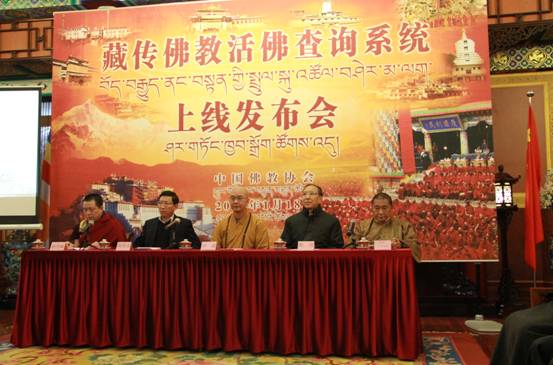An online database of legitimate Living Buddhas was launched on Monday to help followers of Tibetan Buddhism distinguish between real ones and fakes.
为帮助藏传佛教信徒区分真假活佛,合法活佛网上资料库于周一正式上线。
Launched by the Buddhist Association of China at the Guangji Temple in the capital, it will include the names, dates of birth, sect of the religion, the numbers on Living Buddhas' certificates and photographs of each Living Buddha.
该系统是由位于北京广济寺的中国佛教协会发起的。这个在线查询系统可以查询每位活佛的姓名、出生年月、教派、活佛证号和照片。
The database has initially disclosed information on the 870 Living Buddhas in Tibetan Buddhism. Information about more Living Buddhas will be made public once their status has been certified, the association said. It is the first time that China has made such information public.
中国佛教协会表示,这次上线的是第一批共870名西藏地区活佛的信息,更多的活佛信息经核查后将很快面向公众。在中国,此类信息是首次面向公众。

The database was launched after an incident involving Baima Aose, whose original name was Wu Darong, during which he held what was purportedly a Living Buddha enthronement ceremony for Chinese actor Zhang Tielin.
该活佛查询系统设立的起因是张铁林坐床事件。自称具有活佛资格的、原名吴达镕的白玛奥色为张铁林举办了坐床典礼。
He later issued an apology and resigned from all posts after a Tibetan Buddhist monastery in Sichuan province refused to certify him as a Living Buddha.
而在白玛奥色被揭露已被四川藏传佛教寺院拒绝授予活佛后,他发表了致歉声明,辞去了所有职务头衔。
Venerable Master Xuecheng, the association's president, said it is considering expanding the database soon to cover information about all 72,000 Buddhist monks in Chinese Buddhism.
中国佛教协会会长学诚表示,查询系统将很快扩展,将涵盖72000位中国佛教僧侣的信息。













